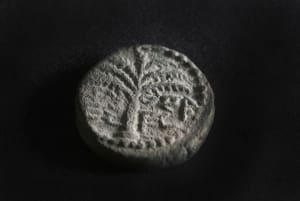Unprecedented discovery: A hidden treasure from a forgotten Jewish revolt against the Romans
This revolt is just one episode among many others where Jews attempted to rid themselves of Roman oppression in Judea
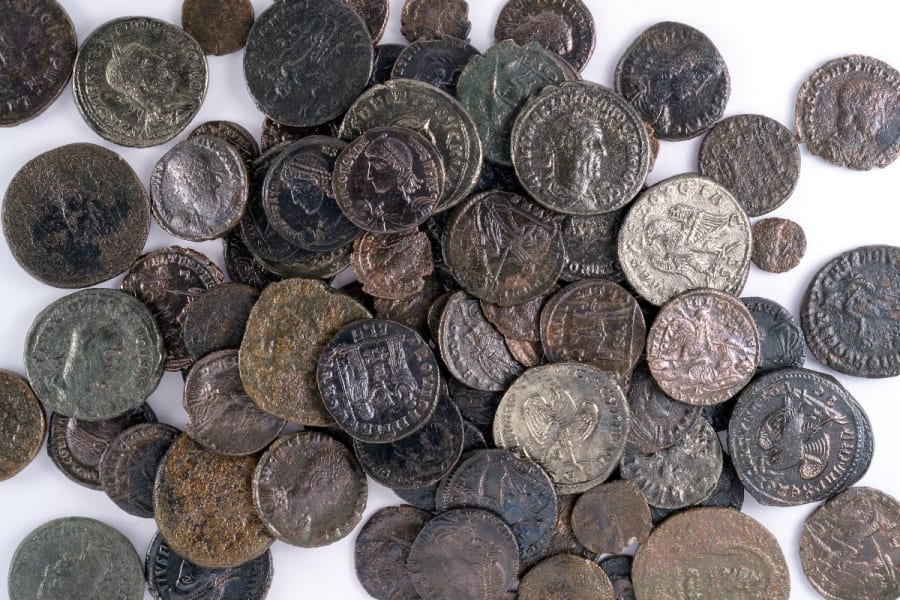
Recent excavations conducted by the Israel Antiquities Authority (IAA) and the Municipality of Lod uncovered a hoard of coins in the remains of a Jewish public building, allegedly destroyed during the tumultuous Gallus Revolt.
The remarkable find of 94 coins lay undiscovered for 1,650 years on Nordau Street in the city of Lod. The coins, alongside other archaeological remains found at the site, provide the first tangible evidence in Lod of the "Gallus Revolt," a crucial period of Jewish resistance against Roman rule.
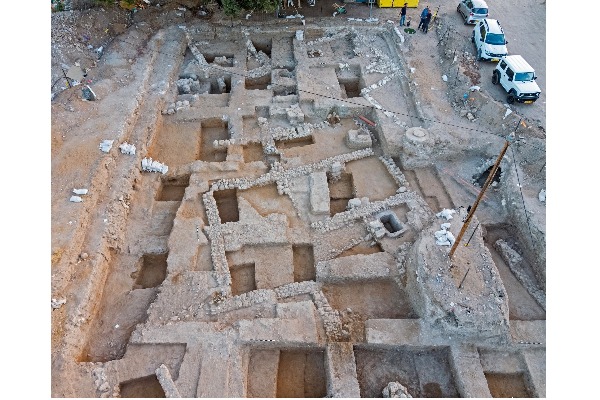
The Gallus Revolt Revolt of 351-354 A.D. was a rebellion by Jews in the Holy Land (known by the Roman name of “Syria-Palaestina” at the time) against the rule of the Roman Empire under Emperor Constantius Gallus.
It was part of a long series of Jewish uprisings against Roman authority, driven by discontent over Roman policies and religious persecutions.
The revolt erupted amid Roman imperial instability following the death of Emperor Constantine in 337 A.D., subsequent power struggles among his heirs, and the Parthian threat to the empire. The Jews' aspirations for independence and religious messianic hopes fueled their resistance.
The revolt initially saw some success but was eventually suppressed by Roman forces, leading to significant Jewish casualties and the devastation of towns like Tiberias, Sepphoris, and Lydda. While historical accounts of the revolt are scarce, some texts mention the destruction of significant Jewish communities, a fact confirmed by modern archaeological findings.
This revolt's name is relatively unique in that it is named after the one who suppressed it, rather than after the leader who initiated it.
It was just one episode among many other attempts by Jews to rid themselves of Roman oppression in Judea. The well-known Great Revolt of 66-74 A.D., which led to the destruction of the Temple in 70 A.D., and the Bar Kokhba Revolt of 132-134 A.D. were just the first ones.
The Gallus Revolt was followed by another major uprising when the Persian conquest of Jerusalem in 614 A.D. briefly raised Jewish hopes of victory over their Roman persecutors, who, by then, had become Byzantine Christian.
The hoard found in Lod comprised silver and bronze coins dated between 221 and 354 A.D., and was discovered within the building's foundation walls. The discovery of these coins, intentionally hidden in the hope of retrieval once peace returned, provides a poignant glimpse into the turbulent era.

The excavated site revealed not only the coin hoard but also impressive stone and marble artifacts, along with inscriptions in Latin, Greek and Hebrew. One particularly intriguing inscription bears the name of a Jewish man from a priestly family, which is currently under examination.
The inscriptions, the location of the site, the Talmudic written sources mentioning Lod as a Jewish city during this period, the pottery assemblage, and the complete absence of pig bones among the animal remains further confirm the building's Jewish association.
Prof. Joshua Schwartz, head of the IAA Council, emphasized the building's importance, suggesting it might have served as a synagogue, study hall, or a meeting place for the city's elders – or perhaps even all three.
He noted that the building's size, coin hoard and other archaeological findings, align with historical descriptions of Lod (known as Diospolis at the time) as a center of Torah-based Jewish life during the Mishna and Talmud periods.
"Lod's role as a leading community with Jewish Torah elders continued from after the destruction of the 2nd temple until it was brutally suppressed in the Gallus Revolt," Schwartz noted.
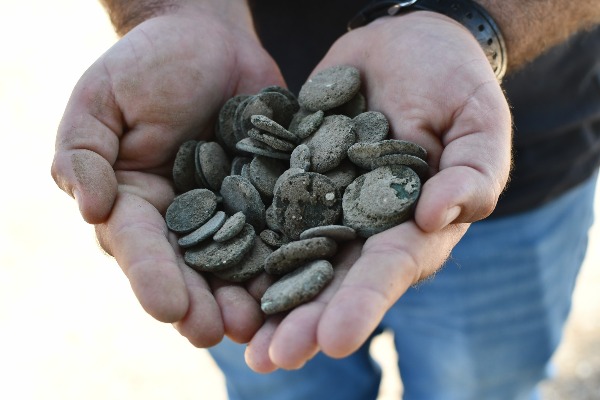
According to archaeologists Shahar Krispin and Mor Viezel of the IAA, who were involved in the excavations process: “In all likelihood, this is a magnificent Jewish building that housed the city’s elders. From Talmudic writings, we know that Lod was a most significant Jewish center in the aftermath of the Second Temple’s destruction in Jerusalem. Some of the renowned Sages of Lod are Rabbi Eliezer ben Horkanos, Rabbi Tarfon, Rabbi Akiva, Rabbi Yosi HaGalili, and many more.”
“This building, destroyed down to its very foundation, is a clear indication that the revolt was forcefully put down with violence and cruelty, and was not simply a local uprising event, as some earlier studies contended. This is the singular witness, thus far, to the extent and power of this revolt in Lod, located in the country’s center.”
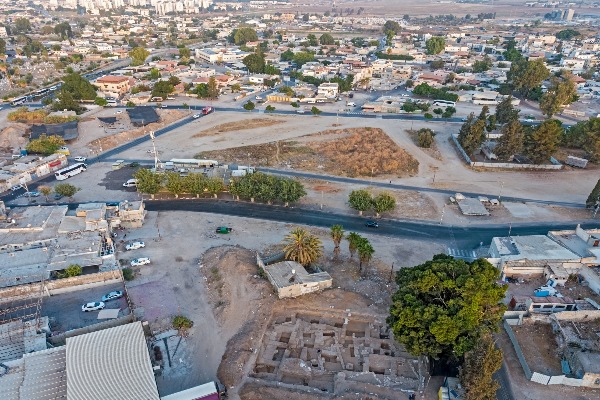
Director of the IAA, Eli Escusido, highlighted the broader implications of these discoveries, stating: “The impressive finds uncovered here reinforce our responsibility to investigate and to conserve Lod’s history and rich heritage. Along with the city’s new exhibition center of the beautiful Lod mosaic, we now bring this building to the awareness of the general public.”
The Mayor of Lod, Yair Revivo, expressed his excitement and emotional connection to the findings. He said this discovery adds another link to Lod’s rich Tannaitic period heritage, connecting the city to the authors of the Mishna and the city to Jewish history.
“I believe that now that it is uncovered, this site will bring many tourists and visitors to the city: Lod is connecting to its past and is looking forward to a bright future.”
The unveiling of these findings is expected to coincide with the annual Central Israel Region Archaeological Conference on June 20 at the Eretz Israel Museum in Tel Aviv. The conference is organized by Tel Aviv University, Bar-Ilan University and the IAA.
This conference will offer a platform for these findings to be shared with the public, free of charge, shedding light on Lod's ancient history and the broader context of the Gallus Revolt.
This groundbreaking discovery not only enriches the understanding of Lod's historical significance but also underscores the enduring legacy of Jewish resilience and cultural heritage.

The All Israel News Staff is a team of journalists in Israel.
You might also like to read this:


